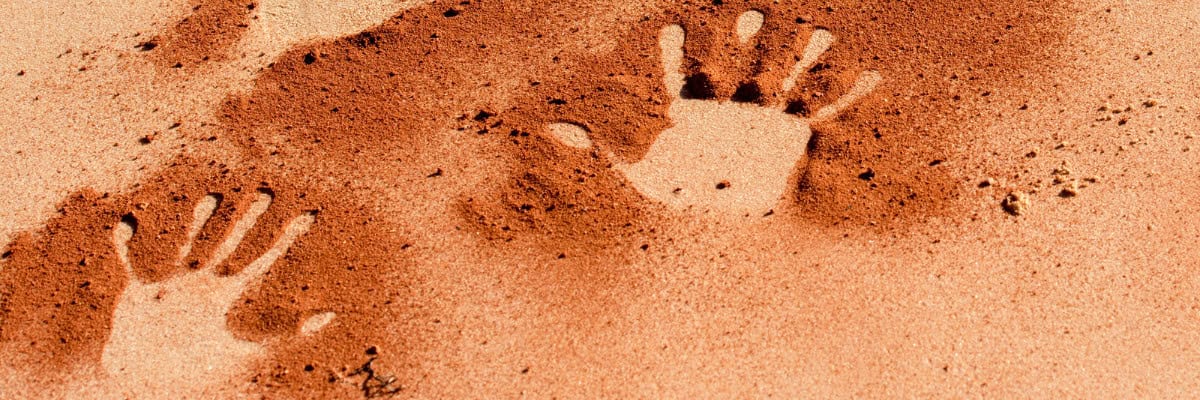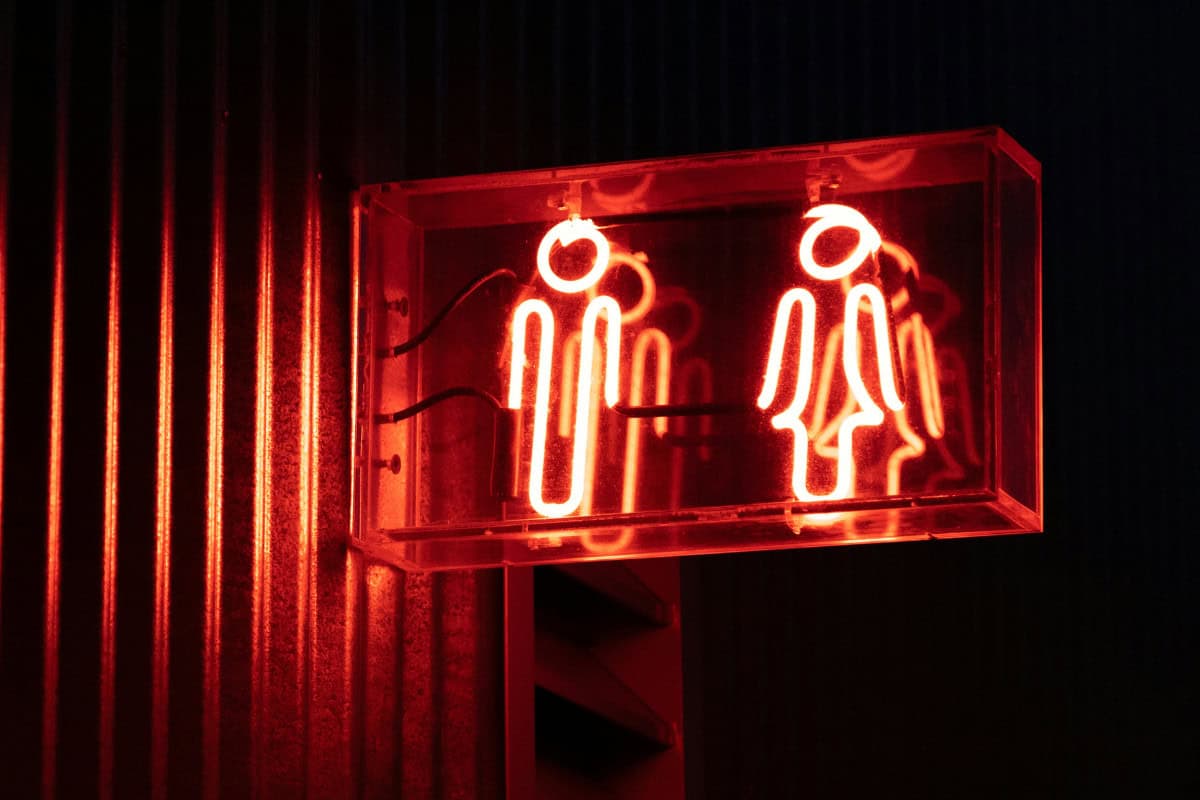Australia — home to the world’s oldest living civilisation
Two hundred and twenty years after Matthew Flinders completed the circumnavigation of the Great South Land and gave the continent the name we know today, the idea of Australia is at last poised to become deeper and more nuanced. And accurate, as a birth certificate should be.
Flinders was under no illusion that the continent he sailed around between 1801 and 1803 was unoccupied.
He took Kuring-gai man Bungaree with him as an emissary to broker relations with those he met as the HMS Investigator travelled up the east coast, around the gulf and then in a gallop in a failing vessel down the west coast, across the bight and back to safe harbour in Port Jackson.
Not all the meetings went well, sailors behaved badly and were not punished, Aboriginal men were shot and killed. By the time they arrived all the sailors were ailing, and another four died.1
But the mammoth journey established that the land claimed for King George III on 7 February 1788 extended beyond what Governor Phillip described as reaching the 135th meridian.
It conclusively revealed that those living in the north of the continent were not sub-human, as many in London had convinced themselves, but had well-established trading relationships for generations.
Drawing the long illusive (to those in the northern hemisphere) continent on a map provided a sense of scale.
But the defining idea of the place for the new arrivals would be a matter of dispute and contest for centuries.
Even when the colonies finally, reluctantly, agreed to seek and then win the permission of Westminster and the Queen to become a partially independent nation, the idea of the place was obscured by myths, denials, and half-truths.
The consequences endure particularly painfully for First Nations people.
The echo of these half-truths will reverberate and be challenged all this year, as citizens absorb the history lessons that they have been discouraged from taking for so long.
You have to know your history to understand why Voice, Treaty, Truth is such a break with the past and why the campaign slogan, “History is Calling” is so inspired.
A failure to recognise First Nations peoples from the beginning
In 1803, the same year Flinders completed his journey, British philosopher and jurist Jeremy Bentham critiqued the messy foundation of the New South Wales penal colony in an excoriating essay.2
He observed, in passing, that the failure to reach an agreement with the First Australians was an incurable flaw.
He blamed Bennelong and Yemmerrawannie for not bringing a treaty with them when they arrived in London as Phillip’s exotic tokens. The former governor bought them suitable clothes to meet the king, but George had no desire to meet.3 Bentham dismissed them as private travellers, he was no advocate for Aboriginal people.
Two hundred and twenty years later Bentham’s rhetorical device has a greater, unintended, resonance.
The failure to recognise those who had made the continent their home for millennia has proven to be an incurable flaw, which has corroded the nation’s foundations and constrained the very idea of Australia.
It has taken many forms — but refusal to formally recognise has been constant.
Petitions and pleas for recognition to Buckingham Palace, Westminster and local parliaments went unanswered or were dismissed on administrative grounds.
But as the Uluru process has showed, First Nations people did not give up.
The initial occupation was not peaceful or consensual. There was fierce and bloody resistance, many were killed (including settlers). Aboriginal leaders were targeted, some decapitated — their preserved heads dispatched to England — others hung in public executions. Tens, possibly hundreds of thousands of others died over a century of guerrilla warfare.
By the end of the nineteenth century, as debates about federation were beginning to exercise the minds of the crew of native born and new arrivals who lived in the colonies, Aboriginal people were deemed invisible.
There was no formal settlement between victor and vanquished. The ‘torment of powerlessness’ was entrenched.
Instead, the rationalisation to protect, ‘to smooth the dying pillow’, provided cover for the manufactured message of a dying race.4
Poets like John Farrell put a gloss on the local experience starting his poem ‘Australia’ with the lines ‘We have no records of a by-gone shame,/No red-writ histories of woe to weep.’5
But anyone who paid attention knew that this was not true – debates raged in local newspapers and even parliaments, best-selling novels explored the ‘red-writ histories’, preachers thundered.
The idea of Australia was a matter of contest.
The creation of a nation
In the half century that Queensland was a (sort of) independent colony, while the federation debates raged, at least 62,000 Aboriginal people were killed by the Native Police and their rampaging overseers.6 For the leaders of the colonies which had passed legislation to ‘protect’ Aboriginal people by removing them to missions and reserves often far from their country, the First Australians were a ‘problem’ to be managed. Responsibility remained primarily with the states until 1967.
As Ernest Renan wrote then, ‘Forgetting…even historical error; is an essential factor in the creation of a nation.’7
For those who believe that a blood sacrifice is an essential ingredient to nation formation, more than enough blood had been shed. But denial prevailed, even though these were truly the Australian wars.
After the First World War Prime Minister Billy Hughes declared that that imperial war, in which 62,000 Australians had lost their lives, had ‘made the nation’.
Six years earlier at the inauguration of Canberra he acknowledged other wars when he said Australia was unfolding ‘without the slightest trace of that race we have banished from the face of the earth. We must not be too proud lest we should too in time disappear.’8
Racialist thinking was an essential ingredient in the founding idea of Australia, and the source of several foundational flaws9, which is why the referendum is so fundamentally challenging to old Australia.
Without a crisis, change happens slowly — three score years and ten is the timer historian Linda Colley puts on it. Without a crisis, change emerges from knowledge — culture leads and politics follows.
Two decades ago, when Prime Minister John Howard suggested that Australians were tired of endless seminars about national identity. He castigated historians and others who knew that in an overwhelmingly immigrant society such an ongoing national conversation was essential and gaining momentum.
But he used all the tools at his disposal to stall it and the foundational change that was looming.
The consequences for First Nations people were dreadful. But slowly there were some gains. Knowledge and confidence grew in the people who had not been ‘banished from the face of the earth’ and they added muscle to Australian democratic method.
Silencing the seminar that had been growing in depth and confidence for three decades also trapped the other 97 percent to an ignorant adolescence. But many kept talking and learning. When the state premiers all signed a Statement of Intent to support the Voice on 3 February 2023, the significance went beyond party politics, redressing one of the flaws in the Constitution that their predecessors had crafted.
The long road toward recognition
By the end of his prime ministership even Howard acknowledged that proper constitutional recognition was necessary.
If the idea of Australia is not to be a half-formed thing, responding to the call of history to give the First Australians the recognition they have long sought is an essential first step.
If we can do this, anything is possible.
Over time, but hopefully not three score years and ten, a multi-faceted nation, that is truly independent, and lives up to the promise of a Federation without fear might emerge.10
Updated 20/2/23
References
- Tim Flannery, ‘The indefatigable Matthew Flinders’,’ in Matthew Flinders, Terra Australis (Melbourne: Text Classics, 2000), xxv.
- Jeremy Bentham, Writings on Australia VI: A plea for the constitution, edited by Tim Causer and Philip Schofield (London: University College London), 38.
- Kate Fullagar, ‘Bennelong in Britain,’ Aboriginal History 33 (2009), 31-51.
- As cited by Jennie Carter, Charles Rowley, The Destruction of Aboriginal Society (Canberra: ANU Press, 1972), 103.
- John Hirst, The Sentimental Nation (Melbourne: Oxford University Press, 2000), 21.
- Raymond Evans and Robert Orsted-Jensen, ‘Pale Death…Around Our Footprints Springs, Assessing Violent Mortality of the Queensland Frontier,’ in Mohammed Adhikari (ed), Civilian Driven Violence and Genocide of Indigenous Peoples in Settler Colonies (Cape Town: University of Cape Town Press, 2020), 139-64.
- Ernest Renan, What is a Nation?, 1882, cited in Caroline Elkins, Legacy of Violence (London: Bodley Head, 2022), 37.
- W.M. Hughes, ‘Honouring the States,’ Sydney Morning Herald, 13 March 1913, 10.
- Julianne Schultz, ‘Facing foundational wrongs,’ Griffith Review 73: Hey, Utopia! (2021), 11-25
- Hirst, Sentimental Nation, 21.




